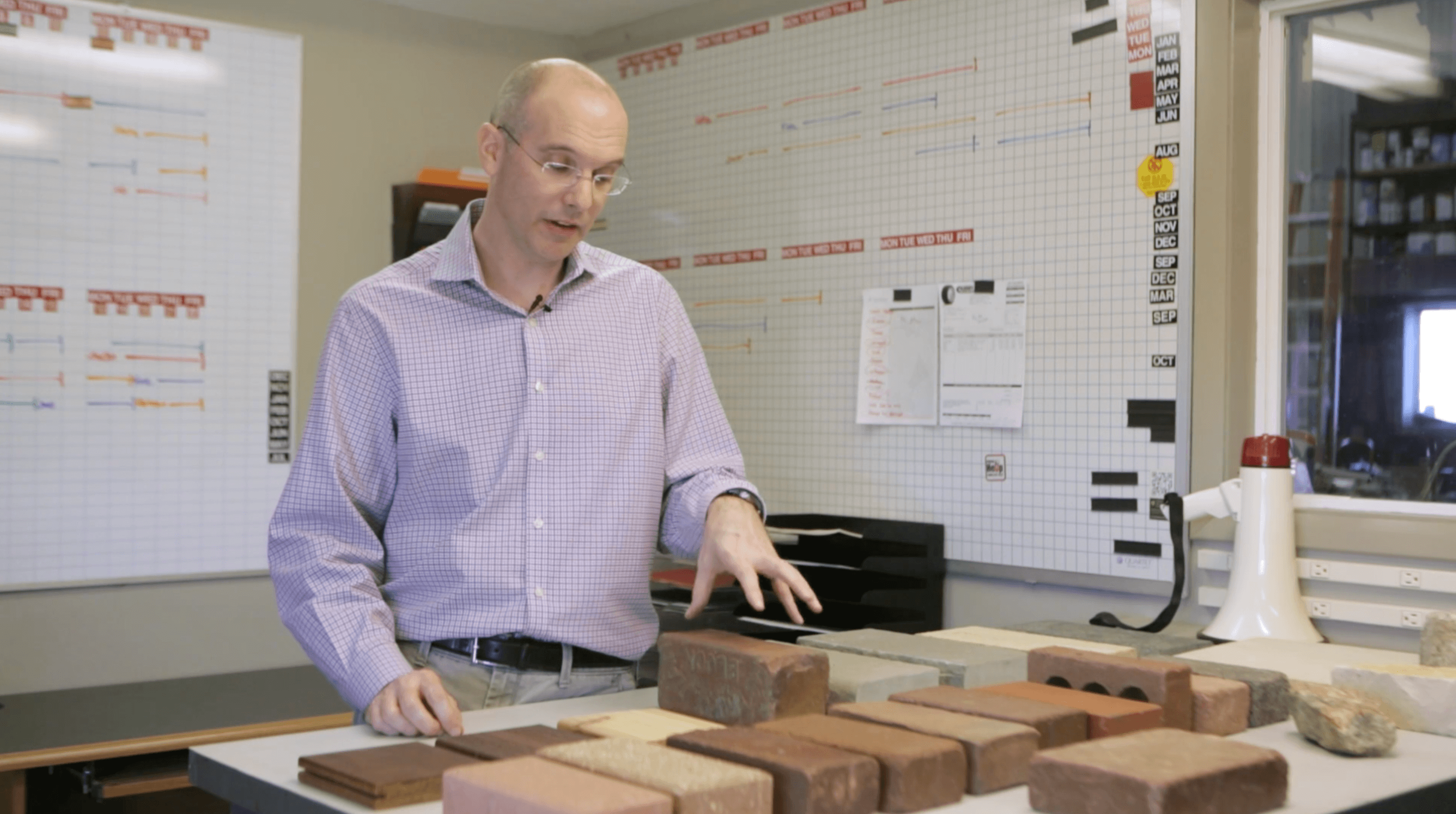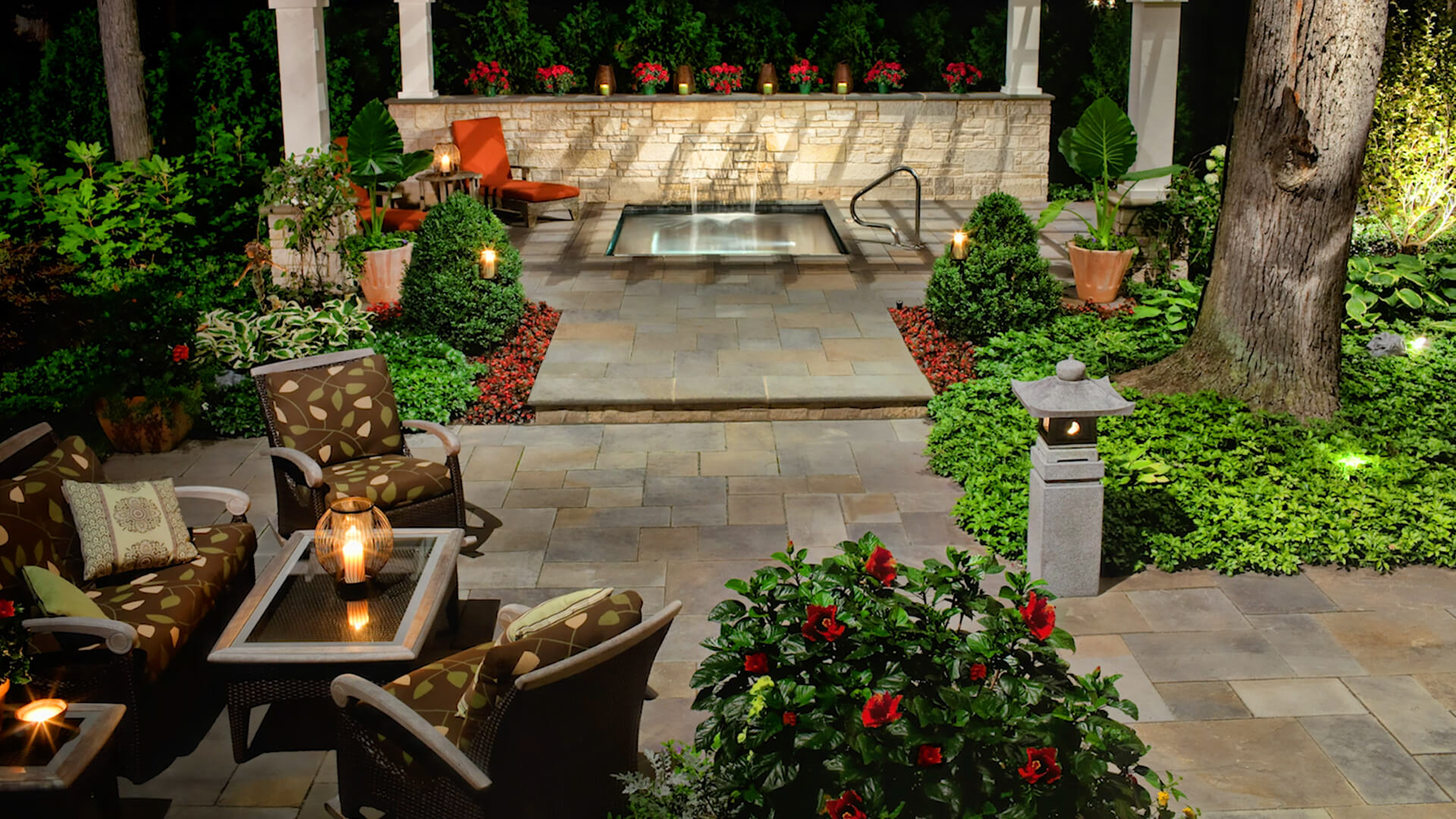Trends come and go. And like the ever-changing styles of cars and clothes, ideas about what makes for great garden design and good plants have drastically changed over the past few decades. What was fashionable 25 to 30 years ago often looks dated and in need of renovation.
Plant breeders have created better trees and shrubs. There are more resilient and natural materials for hardscape (paths, patios and walls). Water conservation techniques have evolved to protect nearby streams and prevent groundwater contamination. And, homeowners are using their outdoor spaces more often—even front gardens—for relaxing and for entertaining. For many people, their garden has become a favorite “stay-cation.”
It’s Only Natural
The biggest movement right now is sustainable design and it’s definitely not just a trend. Sustainability is a term used by many industries and businesses from agriculture and fishing to construction and manufacturing—it’s the idea that goods and services should be produced in ways that don’t excessively use or abuse resources, and in doing so, protect the environment.
The goal of designed and managed sustainable landscapes is to maintain soil integrity, create plant and animal diversity, and, ideally, contribute to our overall wellness. No matter what style garden we design, sustainability is always an underlying principle at Hursthouse.
Sustainability goes beyond the design and considers the site. Plants rely on sunlight and water, but it’s the ground below that contains life-giving nutrients needed for their growth and overall health. Soil is a living ecosystem—home to millions of beneficial organisms. When the sprinklers or hose runs, you’re really watering the soil life—the organisms, not just the plants. These organisms, in turn, help plants live and thrive.
“Bacteria and fungi in the soil play an important role,” says Scott Hursthouse, facility and purchasing coordinator at Hursthouse. “They’re part of the cycle of freeing up nutrients and breaking down soil so that plants can use them.” Many types of fungi live in and sometimes on the soil. “The mushroom you may see is only the fruit,” he explains. “There’s a network of fibers underground that extend the plant’s root system so there’s a symbiosis between the plant and the fungi, bacteria and other organisms that live in the soil.” Scott has a degree in environmental education and is passionate about the need to appreciate and understand nature and all of its interconnected and often complex systems.
Practicing What We Preach
Some examples of sustainable practices include sourcing materials locally, so they’re not shipped from several hundred miles away. Sourcing local organic amendments—compost, soils and mulch—cuts down on the use of gas and reduces carbon emissions—something of interest to many people, especially to the Hursthouse team.
In some of our projects, sustainable design may involve using landscape by-products—keeping and shredding leaves on site to use as mulch, and using recycled paving materials, such as antique street pavers—when appropriate. “All of these practices reduce chemical use, as well as conserve energy,” Scott says.
The idea of sustainability embraces ways we can reduce dependence on resource-intensive features, such as vast, manicured and chemically treated lawns, and hedges that must be clipped weekly with gas-powered equipment.
Giving New Life to Old Materials
Recycled antique clay pavers or granite blocks may be used in some of our landscape designs. Many of these materials come from city streets that were being repaired, revealing the pavers below the asphalt. (Fun fact: By the 1890s, more than 300 miles of Chicago streets were paved with granite or clay bricks.)
The pavers are highly prized for landscapes that call for vintage charm or old-world elegance. The clay was extracted locally and “vitrified”—heated in a kiln at temperatures up to 2,200 degrees for long periods. Today, that would be a very expensive process.
The temperatures hardened each paver so that they resist moisture and thus resist cracking. No two are perfectly identical. The colors are subtly different based on the clay and that is part of the charm of these materials. And, just as important, they’ve been “repurposed” and obtained locally—all part of a sustainable practice.
Water Conservation
Water impacts our lives on a daily basis, including how we treat it and where we send it in designed landscapes. While rain is an asset, one inch of precipitation on an acre produces 27 thousand gallons of water. This excess water often ends up in sewers and eventually travels hundreds of miles. Runoff can cause erosion as well. Flooding is less significant in more natural settings. In a sustainably designed landscape, some of the rain during a storm is absorbed into the ground, thus lessening the amount of runoff into streams or sewers.
Permeable surfaces, rain gardens, and capturing water with rain barrels and with underground rain exchange systems are all sustainable methods. We may use captured water and recirculate it in a number of ways—we may direct it to a homeowner’s pond, a fountain, or we may design a rain garden—instead of sending all that water into sewers and eventually downstream.
Native Plants
Another component of sustainable landscaping is removing vegetation that can harm ecosystems, such as invasive species like buckthorn, Japanese honeysuckle and purple loosestrife. Birds carry the berries from these non-native plants and drop them in forest preserves and other natural areas where they soon take over and prevent local wildflowers from growing.
In some designs, we may use trees, shrubs and perennials that are native to northeastern Illinois. In the Midwest, where winter temperatures can dip to -20 degrees and summers can produce endless heat and periods of drought, plants must be well-adapted to survive let alone thrive. “It’s important to look at all the members playing a role, not just the pretty ones or desirable species,” says Scott.
Native plants–the flowers, grasses, shrubs and trees that grew here prior to European settlement–do just that. Many are found growing in forest preserves, open spaces, the dunes and the prairies. Evolving over tens of thousands of years, Midwestern native plants have adapted to the harshest winters, they tolerate droughts, and typically prosper in local soils. They attract butterflies, bees and other beneficial insects. And, many offer great fall color. Once they’re established, native plants typically need less supplemental water than other ornamental garden plants.
The Big Picture
“If you look at your yard as a miniature ecosystem—one that’s part of a larger natural community—you begin to realize that if you want songbirds, you need insects to feed them,” Scott says. “If you have a chemical wasteland in your yard, you’re not going to have songbirds or butterflies. By reducing chemical use and the use of fossil fuels, you’re leaving your landscape a cleaner place and allowing these organisms to thrive together.”
Sustainability is not just a “buzz word.” It’s working with environmentally-friendly choices, being sensitive to the site—whether we design and build it in a busy urban area with a small space garden or in a large suburban setting. It’s a “trend” that’s here to stay.

